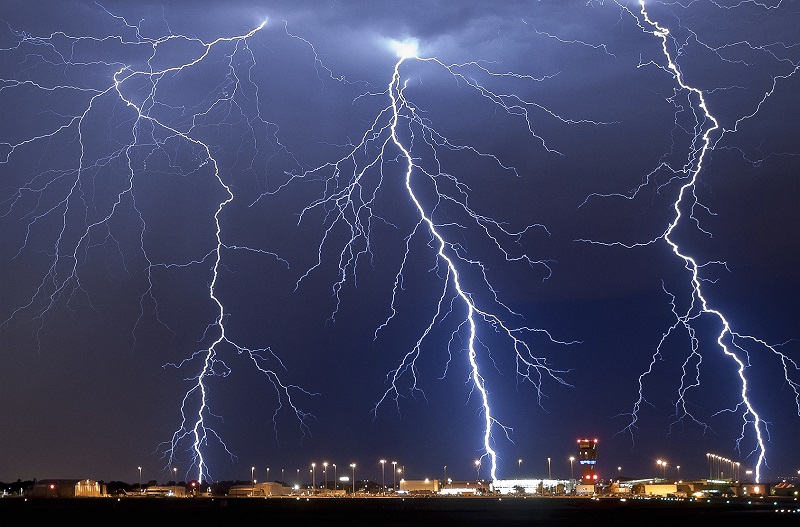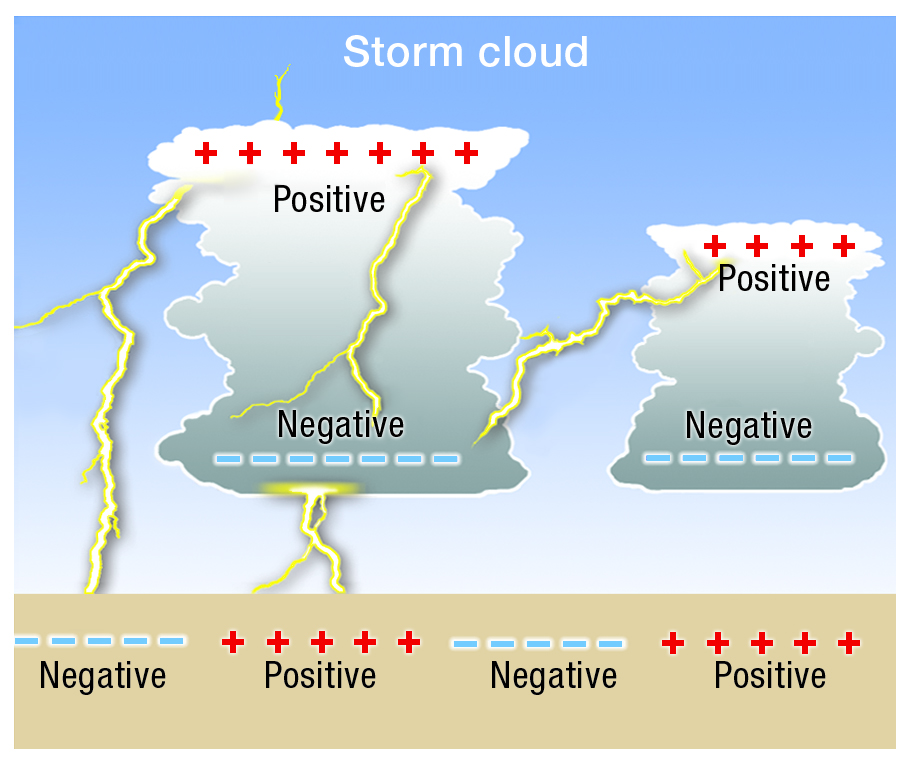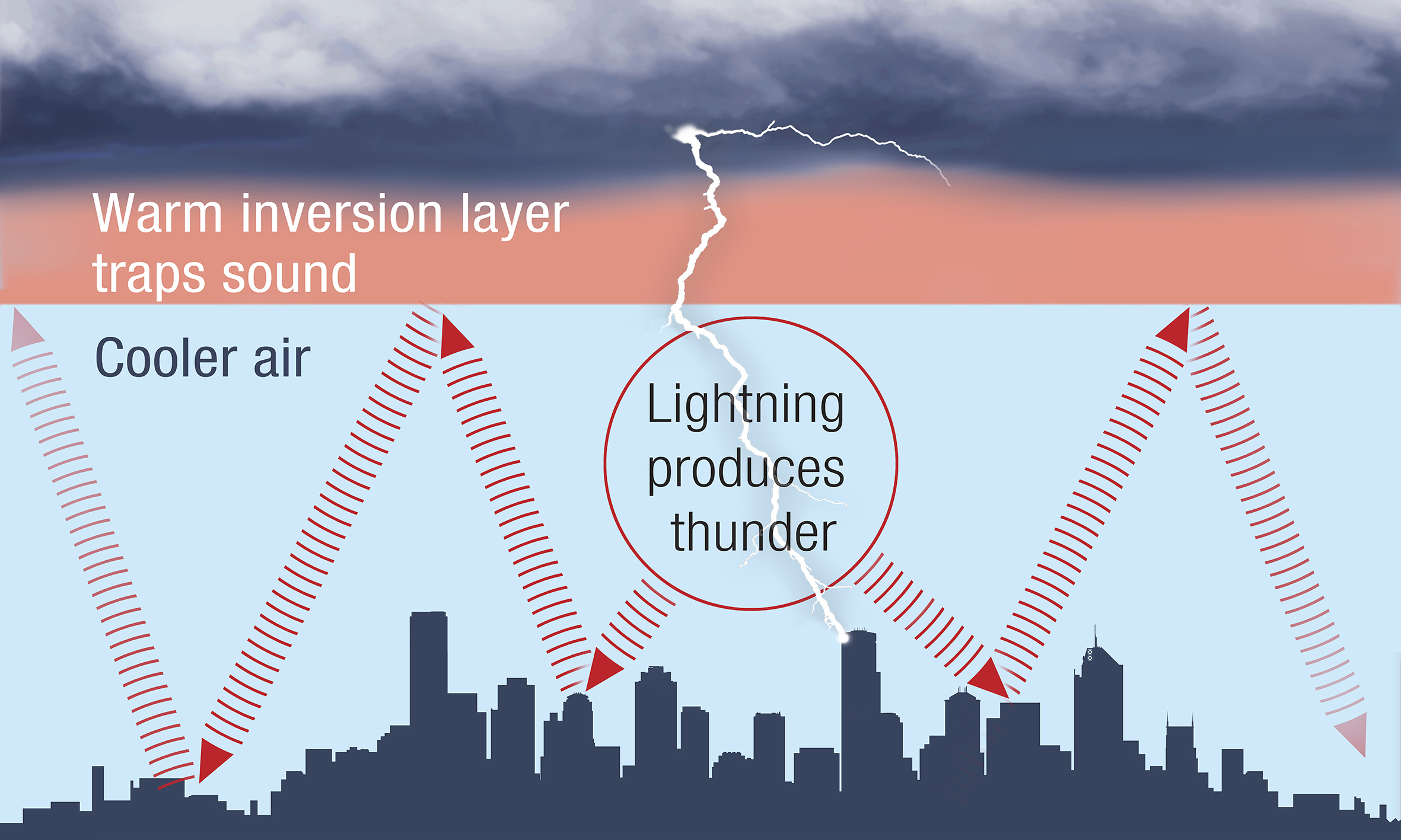Explainer: what is thunder?
01 June 2018
It is a dark and stormy night, and you see a spectacular flash of light in the sky — lightning. What's coming next? You guessed it…thunder! So what is thunder, how is it connected to lightning and what's the story with that distinctive rumbling sound?
Thunder is the sound produced by rapidly expanding and contracting pockets of air associated with lightning. So to understand thunder, it helps to know a little about lightning.

Image: Lightning over Adelaide airport, March 2013. Credit: Rowland Beardsell
Lightning is an electrical discharge that occurs within a cloud, between clouds, from clouds to the ground and even from the cloud top into the surrounding atmosphere. Within a developing thunder cloud (cumulonimbus), there are millions of tiny ice crystals and super-cooled water droplets rubbing up against each other as they move up and down. This causes a positive charge to develop at the top of the cloud and a negative charge at the bottom. If this build-up of charge grows large enough, a discharge can occur—lightning. The thunder sound is the explosive expansion of air, heated to around 30,000 °C (hotter than the surface of the sun!) directly around the lightning bolt, generating an audible shock wave. Thunder can usually be heard up to 15 km from the lightning, but under optimum conditions, such as on a still night, it can sometimes be heard as far away as 25 km.

Image: Lightning happens when sufficient positive and negative charge occurs in thunderstorm clouds to cause a discharge.
Can thunder tell you how far you are from lightning?
Yes! Have you noticed that when you see a flash of lightning there is a delay before you hear the thunder? This is because the speed of light is much faster than the speed of sound. Light travels at around 300,000 km every second. That's over 1 billion km/h, so we effectively see the flash of lightning at the same time as it happens. Sound, however, travels at the slower pace of around one third of a kilometre every second, a tad over 1000 km/h, so it takes about 3 seconds to travel around 1 km. Using this knowledge you can estimate how far away the lightning occurred. For example if you see a flash of lightning and you count for 6 seconds before you hear thunder, then the lightning occurred 2 km away.
Why does thunder rumble?
Thunder often sounds like a drawn-out rumble. There are a couple of different reasons for this. A lightning strike can fork in many directions as it travels through the air, creating a series of explosions and shock waves. This produces a range of different sound waves near-simultaneously that reach your ear as a continuous sound.
Another contributing factor is the way sound waves bounce off objects such as trees, buildings and the terrain. You can think of this as similar to echoes in an empty room. When the lightning is very close to you and the sound wave hasn't had enough time to bounce off many objects it sounds like a loud crack. If it's further away, there is more time to bounce off objects and you hear it as a rumble.
Low-frequency rumbling sounds can travel further before they dissipate. Higher-frequency or cracking sounds dissipate quickly. This means the sound you hear when you are very close to the lightning can be different to what another person may hear a few kilometres away.
What is inversion thunder?
Have you heard thunder that is extra loud and rumbly, perhaps even causing windows to shake or rattle? This can be due to a very intense and close lightning strike — or it can be due to one that is deceptively far away. Under atmospheric conditions known as a temperature inversion, thunder can travel large distances and maintain its intensity. This happens when the air at the surface is cooler than the air above it. This temperature pattern functions like a lid some distance (usually less than 1 km) above the surface. When lightning strikes the ground, the sound wave is trapped under the ‘lid’ and can't dissipate vertically, as it normally would, so it travels horizontally. Inversion thunder often sounds louder, and can be heard and felt at much greater distances than ordinary thunder. In some cases, the trapped/amplified thunder has even been mistaken for a minor earthquake!

Image: In inversion thunder, sound is trapped under a layer of warmer air, keeping it closer to the surface for longer, which can mean it sounds louder and travels further.
More information
Preparation and safety during thunderstorms
A bolt from the blue: what is lightning?
Ask BOM: what is a thunderstorm?



Comment. Tell us what you think of this article.
Share. Tell others.